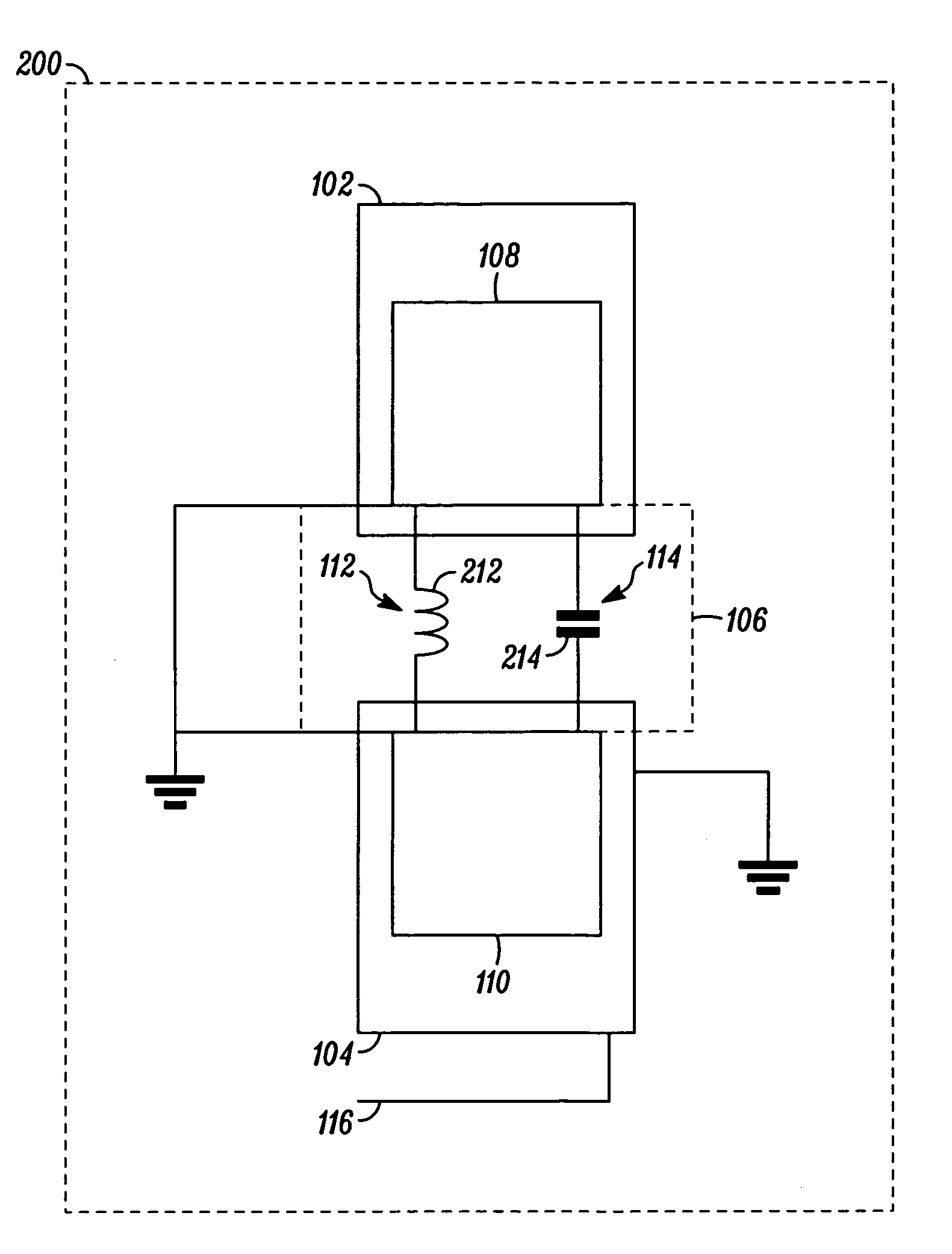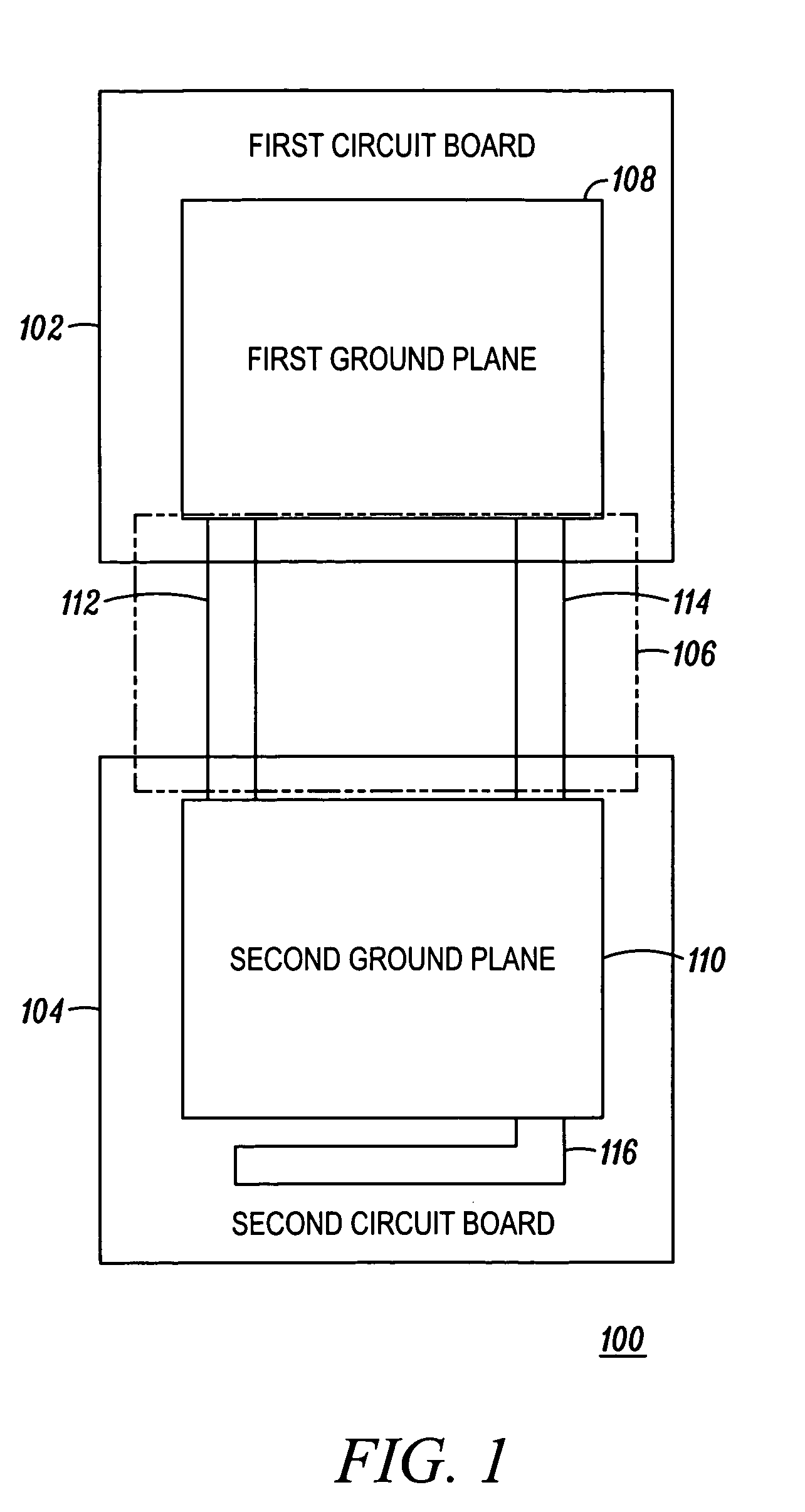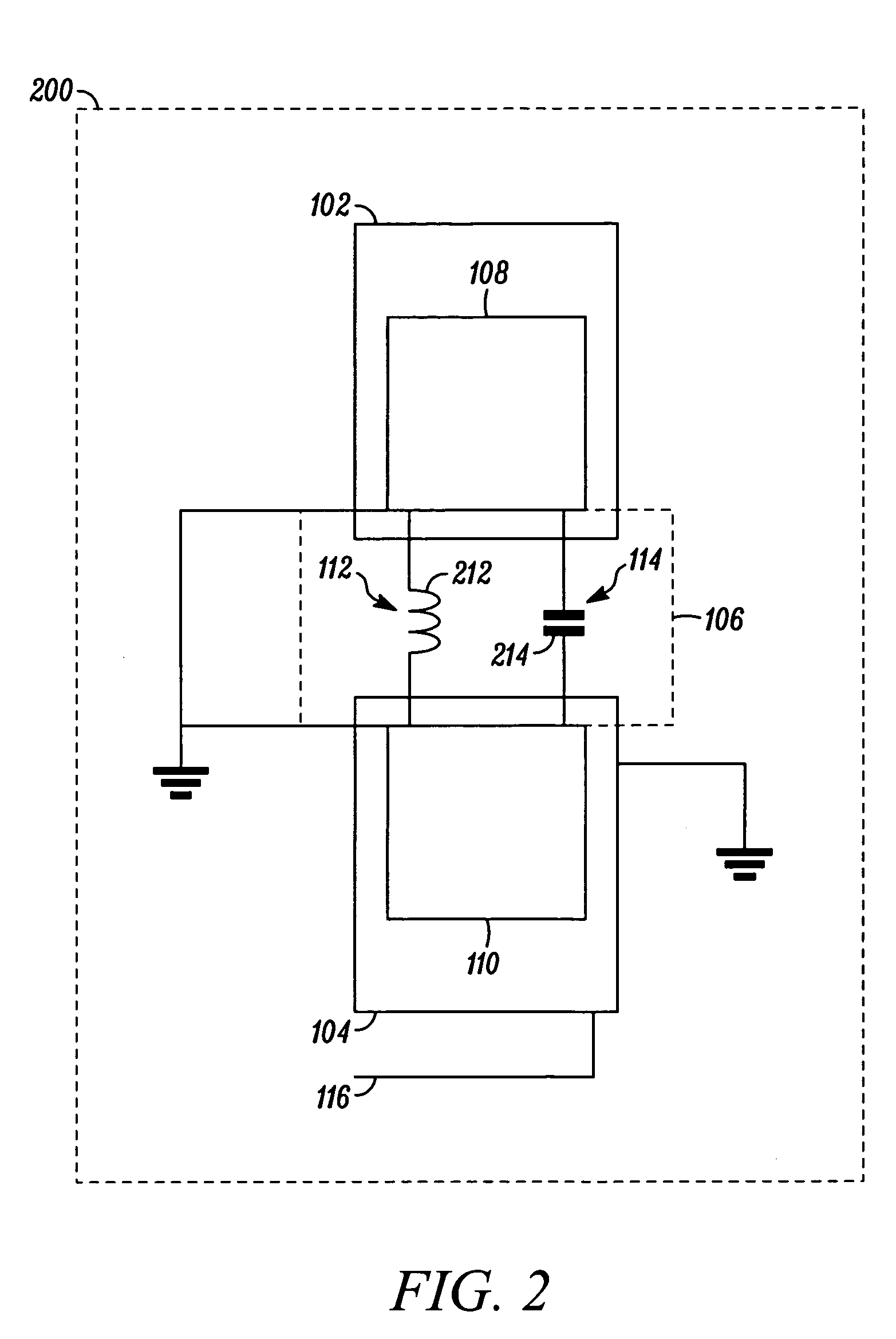Wireless device with distributed load
a wireless device and load technology, applied in the direction of substantially flat resonant elements, high frequency circuit adaptations, resonant antennas, etc., can solve the problems of reducing the efficiency of wireless devices at low frequency ranges, shortening the electrical length of circuit boards in wireless devices, and reducing efficiency
- Summary
- Abstract
- Description
- Claims
- Application Information
AI Technical Summary
Problems solved by technology
Method used
Image
Examples
first embodiment
[0021]FIG. 3 shows a block diagram illustrating an exemplary wireless device 300 with a distributed load in accordance with a The wireless device 300 includes a first circuit board 302, a second circuit board 304, and a distributed load 306. The first circuit board 302 includes a first ground plane 308, and the second circuit board 304 includes a second ground plane 310 and an antenna 316. The distributed load 306 has an inductive coupling 312 and a capacitive coupling 314. The capacitive coupling 314 is placed between the first ground plane 308 and the second ground plane 310. The capacitive coupling 314 is physically grounded on the second ground plane 310 but is floating over the first ground plane 308. In this embodiment, a flat patch 318 is used to create a floating connection 320 to form the capacitive coupling 314. In accordance with an embodiment, the flat patch 318 is physically and electrically coupled to the second ground plane 310 and capacitively coupled to the first g...
second embodiment
[0024]FIG. 6 shows a diagram illustrating a capacitive coupling through a cylindrical capacitive coupler in accordance with the second detailed embodiment as shown in FIG. 5. In this second embodiment, the capacitive coupling 514 shown in FIG. 5 is implemented as an air gap 614 between a metal finger 615 physically and electrically coupled to the first circuit board 502 and a conductive barrel 620 physically and electrically coupled to the second circuit board 504. The first circuit board 502 and the second circuit board 504 are connected using a pair of hinges: a first hinge 602 and a second hinge 604. In this embodiment, the pair of hinges is placed opposite to where the antenna 516 (not shown in FIG. 6) is placed in the second circuit board 504. The first hinge 602 supports the inductive coupling 512 (not shown in FIG. 6), and the second hinge 604 supports the capacitive coupling 514. The distributed load 506, as supported by the pair of hinges, 602, 604 produces sufficient imped...
PUM
 Login to View More
Login to View More Abstract
Description
Claims
Application Information
 Login to View More
Login to View More - R&D
- Intellectual Property
- Life Sciences
- Materials
- Tech Scout
- Unparalleled Data Quality
- Higher Quality Content
- 60% Fewer Hallucinations
Browse by: Latest US Patents, China's latest patents, Technical Efficacy Thesaurus, Application Domain, Technology Topic, Popular Technical Reports.
© 2025 PatSnap. All rights reserved.Legal|Privacy policy|Modern Slavery Act Transparency Statement|Sitemap|About US| Contact US: help@patsnap.com



